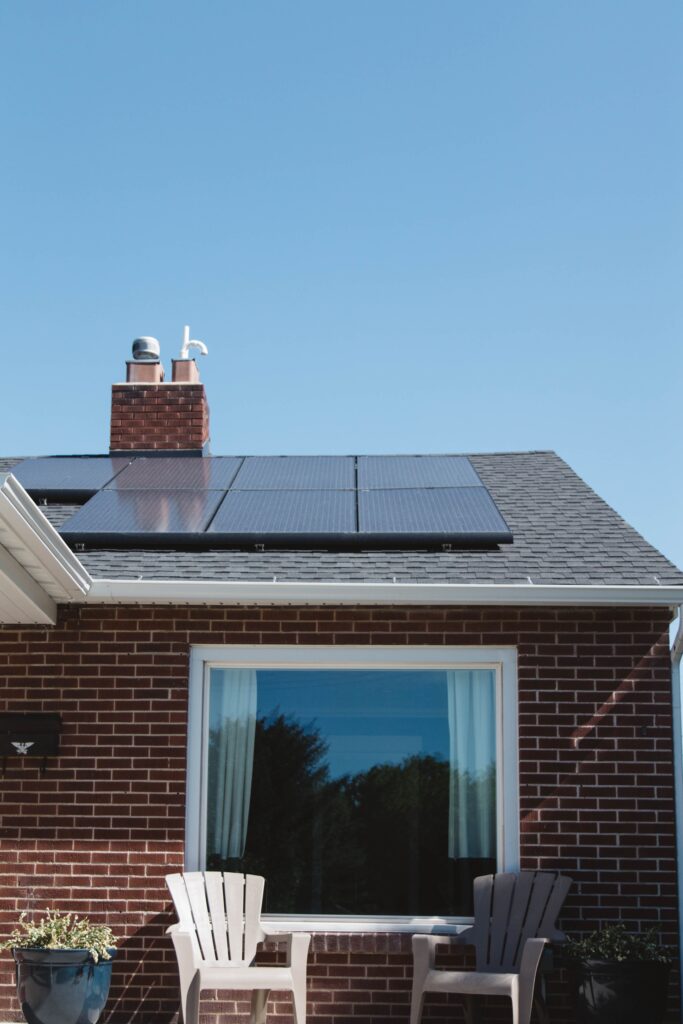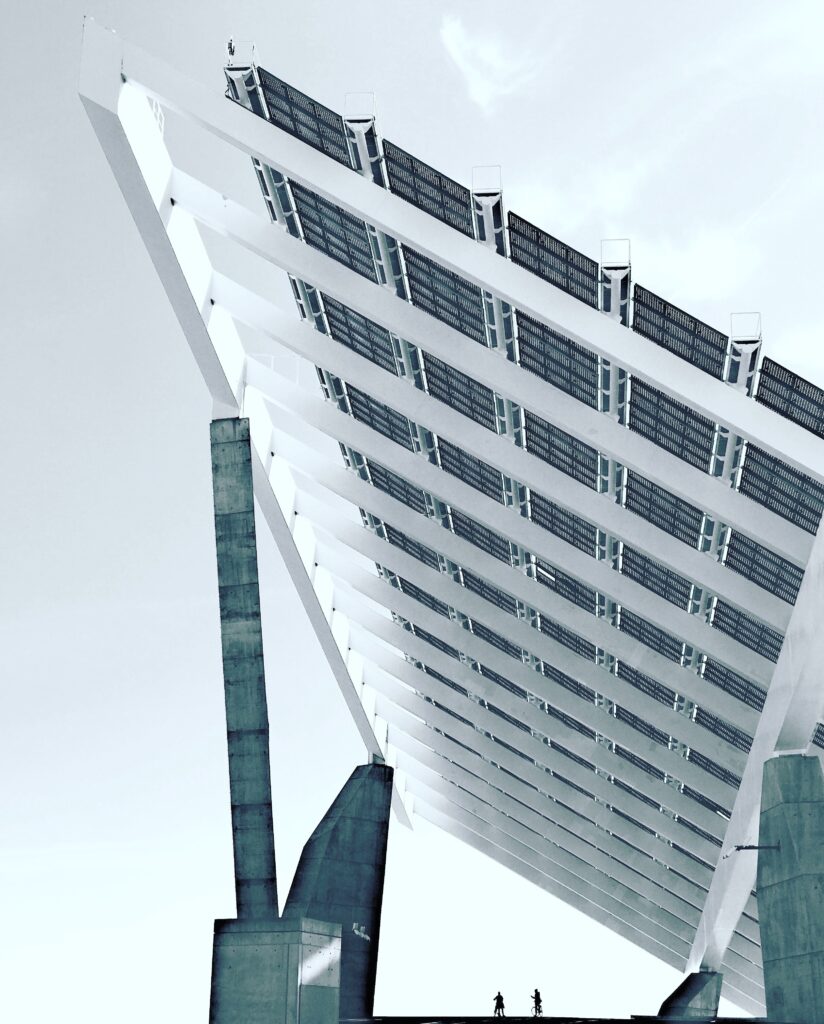When it comes to powering a house with solar energy, the question that often arises is, “How many solar panels and batteries are needed?” Well, the answer is not as straightforward as one might think. The number of solar panels and batteries required to power a house depends on various factors such as the energy consumption of the household, the location, and the efficiency of the solar panels. In this article, we will explore the different considerations in determining the optimal number of solar panels and batteries to effectively power a house. Whether you are a renewable energy enthusiast or simply curious about the potential of solar power, read on to uncover the answers you seek.

Understanding Solar Energy
What is solar energy?
Solar energy is a renewable source of power generated by harnessing the energy from the sun. It involves the use of solar panels, which are made up of photovoltaic (PV) cells that convert sunlight into electricity. This clean and sustainable energy source offers numerous environmental and financial benefits, making it an increasingly popular choice for homeowners and businesses alike.
How does a solar panel system work?
Solar panel systems work by using the photovoltaic effect to convert sunlight into usable electricity. When sunlight hits the solar panels, the PV cells within the panels absorb the photons and release electrons. These electrons then create an electric current that can be used to power various devices and appliances in your home.
The solar panels are connected to an inverter, which converts the DC (direct current) electricity produced by the panels into AC (alternating current) electricity that can be used to power your home. Any excess electricity generated by the solar panels can be stored in batteries or fed back into the grid for later use.
Understanding solar batteries.
Solar batteries play a crucial role in maximizing the benefits of solar energy. They store the excess electricity generated by your solar panel system during the day and provide power during times when the panels are not producing electricity, such as at night or during periods of low sunlight. By storing this excess energy, solar batteries ensure that you can still have power even when the sun is not shining.
Benefits and drawbacks of using solar energy.
Using solar energy offers numerous benefits. Firstly, it is a clean and renewable source of power, which means it has a minimal environmental impact. Solar energy also reduces your reliance on traditional electricity sources, helping to lower your carbon footprint and reduce greenhouse gas emissions.
Additionally, solar energy can lead to significant financial savings by reducing your monthly electricity bills. By generating your own electricity, you can potentially offset or eliminate your reliance on the grid. Moreover, various government incentives and tax credits are available to encourage the adoption of solar energy, further reducing the cost of installation.
Despite its many advantages, solar energy does have some drawbacks. The initial cost of installing solar panels and battery systems can be high, although it is important to consider the long-term savings and return on investment. Additionally, solar panels are dependent on sunlight, so their efficiency can be impacted by factors such as weather conditions and the orientation of your home.
Solar Panel Sizing
Factors impacting solar panel size.
Several factors need to be taken into account when determining the size of a solar panel system. The primary considerations include the energy consumption of the house, the available roof space for installation, and the amount of sunlight the area receives. Other factors to consider are the climate, shading, and the efficiency of the solar panels themselves.
How to calculate solar panel size.
To calculate the size of the solar panel system needed for your house, you first need to determine your average daily energy consumption. This is typically measured in kilowatt-hours (kWh), and you can find this information on your electricity bills or by using an energy monitoring device.
Next, consider the solar panel efficiency and the average number of sunlight hours in your location. Divide your daily energy consumption by the product of the solar panel efficiency and the average daily sunlight hours to determine the required panel size in kilowatts (kW).
Determining the number of solar panels needed.
The number of solar panels needed for your house depends on the wattage output of each panel and the total wattage output required to meet your energy needs. To calculate the number of solar panels, divide the required solar panel system size by the wattage output of each panel. Keep in mind that it is recommended to add a buffer to account for variations in sunlight and panel degradation over time.
Understanding Energy Consumption
Estimating energy usage of the house.
Estimating your energy usage is a crucial step in determining your solar panel and battery needs. Carefully review your past electricity bills to identify your average monthly and yearly usage. This will provide a baseline for understanding your energy needs and help you make informed decisions about the size of your solar panel system.
Key appliances and devices and their energy consumption.
Certain appliances and devices consume more energy than others. It’s important to identify which ones contribute significantly to your energy usage so you can optimize their efficiency or consider alternative solutions. Appliances such as air conditioners, refrigerators, and water heaters typically consume the most energy in a household.
Seasonal variation in energy consumption.
Energy consumption can vary throughout the year depending on seasonal changes in temperature and daylight hours. For example, during the summer months, air conditioning units may run more frequently, leading to increased energy usage. Understanding these seasonal variations can help you accurately estimate your energy needs and tailor your solar panel and battery system accordingly.
Determining Solar Panel Needs for Your House
Assessing the load.
Assessing the load refers to evaluating the power requirements of your household. It involves calculating the total wattage of all the appliances and devices that will be powered by your solar panel system. By determining your load accurately, you can size your solar panel system appropriately to meet your energy needs.
Calculating the amount of sunlight available.
The amount of sunlight available in your location plays a critical role in the efficiency and output of your solar panel system. Factors such as shading from nearby buildings or trees, the angle of your roof, and the orientation of your house can impact the amount of sunlight your solar panels receive. It is important to calculate the average daily sunlight hours in your area to understand the potential energy generation of your solar panel system.
How roof size and orientation impact the number of panels needed.
Roof size and orientation are important considerations when determining the number of solar panels needed for your house. A larger roof area allows for the installation of more panels, which can generate more electricity. Additionally, the orientation of your roof, preferably facing south in the Northern Hemisphere and north in the Southern Hemisphere, maximizes the amount of sunlight your panels receive throughout the day. A well-oriented and spacious roof can accommodate more panels and maximize the energy output of your solar panel system.

Understanding Battery Storage
How do solar batteries work?
Solar batteries are an integral component of a solar panel system, as they store excess electricity for use during times when the panels are not producing enough power. When your solar panels produce more electricity than you need, the excess energy is stored in the batteries. The batteries then release this stored energy when your panels are not producing enough electricity, such as during the nighttime or on cloudy days.
Importance of battery storage for solar energy.
Battery storage is crucial for maximizing the benefits of solar energy. It allows you to store excess electricity generated during the day and use it when the solar panels are not producing enough power. By having a battery storage system, you can ensure a consistent power supply and reduce your reliance on the grid, which can result in significant savings on your electricity bills in the long run.
Types of solar batteries.
There are different types of solar batteries available, each with its own advantages and disadvantages. The most common types are lead-acid batteries, lithium-ion batteries, and saltwater batteries. Lead-acid batteries are the oldest and most established type, while lithium-ion batteries are known for their high energy density and longer lifespan. Saltwater batteries are a newer and more environmentally friendly option. Each type has different characteristics, capacity, and cost, so it is important to choose the one that best suits your needs and budget.
Calculating Battery Needs for Your House
Understanding your energy usage profile.
To calculate the battery capacity needed for your house, you need to have a clear understanding of your energy usage profile. Determine the average daily energy consumption of your household and assess the duration of time you want the battery to provide power during periods when your solar panels are not producing electricity. This information will help you determine the storage capacity required to meet your energy needs.
Calculating storage capacity needed.
To calculate the storage capacity needed, multiply your average daily energy consumption by the desired number of days of autonomy. The days of autonomy refer to the number of days you want your batteries to power your household without relying on external electricity sources. It is recommended to have a buffer and choose a battery capacity that exceeds your calculated needs to account for any unexpected variations in energy consumption or weather conditions.
Number of batteries required.
The number of batteries required depends on the capacity of each battery and the total storage capacity needed to meet your energy needs. Divide the calculated storage capacity needed by the capacity of each battery to determine the number of batteries required. Consider factors such as the discharge rate and depth of discharge when selecting batteries to ensure optimal system performance.

Cost Analysis of Solar Panel and Battery Installation
Average cost of solar panels.
The cost of solar panels varies depending on several factors, such as the size of the system, the quality of the panels, and the complexity of the installation. On average, the cost of a solar panel system can range from several thousand dollars to tens of thousands of dollars. However, it is important to consider the long-term financial benefits, including potential savings on electricity bills and government incentives, when evaluating the cost of solar panel installation.
Average cost of solar batteries.
Solar batteries tend to be more expensive than solar panels. The cost of solar batteries depends on factors such as the type, capacity, and brand. On average, the cost of a solar battery can range from a few hundred dollars to several thousand dollars. It is important to carefully consider the cost and performance characteristics of different battery options to ensure you choose one that aligns with your needs and budget.
Cost benefits versus traditional electricity.
Although the initial cost of installing solar panels and batteries can be significant, it is important to consider the long-term cost benefits compared to traditional electricity sources. By generating your own electricity, you can potentially reduce or eliminate your monthly electricity bills. Additionally, various government incentives and tax credits are available to help offset the initial installation costs, making solar energy an attractive and cost-effective option in the long run.
Choosing the Right Solar Panels and Batteries
Quality factors to consider.
When choosing solar panels and batteries, it is important to consider several quality factors. Look for reputable manufacturers with a track record of producing reliable and efficient products. Consider factors such as the panel efficiency, durability, and warranty. Additionally, certifications and independent lab test results can provide valuable information about the quality and performance of the products.
Product warranties.
Product warranties are an essential consideration when choosing solar panels and batteries. Check the duration and coverage of the warranties offered by manufacturers. A longer warranty period can provide peace of mind and indicate the manufacturer’s confidence in the product’s performance and durability.
Looking at customer reviews.
Reading customer reviews and testimonials can provide valuable insights into the performance, reliability, and customer satisfaction of different solar panels and batteries. Look for reviews from reputable sources and consider the experiences of other customers who have installed similar systems. This can help you make an informed decision and choose products that have a positive reputation in the industry.
Installation of Solar Panels and Batteries
Pre-installation preparations.
Before installing solar panels and batteries, several preparations need to be made. Ensure that your roof is in good condition and can support the weight of the panels. Clear any obstacles, such as trees or structures, that could cast shade on the panels. Obtain any necessary permits and approvals from local authorities and utility companies. Finally, engage a qualified and experienced installer who can ensure proper installation and compliance with safety regulations.
Installation process.
The installation process typically involves mounting the solar panels on the roof, connecting them to the inverter, and wiring the system to your home’s electrical panel. The batteries are connected to the inverter and integrated into the overall system. The installation should be performed by a licensed professional to ensure proper electrical connections and adherence to safety standards.
Post-installation maintenance and care.
After the installation is complete, regular maintenance and care are necessary to ensure the optimal performance and longevity of your solar panel and battery system. This includes cleaning the panels to remove dirt and debris, inspecting for any damage or malfunctions, and monitoring the performance of the system using energy monitoring tools. It is recommended to consult the manufacturer’s guidelines and engage professional technicians for any necessary repairs or maintenance.
Environmental Impact of Solar Panels and Batteries
Carbon footprint of solar panels and batteries.
Solar energy offers significant environmental benefits by reducing greenhouse gas emissions and dependence on fossil fuels. Solar panels produce clean, renewable energy without emitting harmful pollutants or greenhouse gases. Additionally, the production and disposal of solar panels and batteries have a lower carbon footprint compared to traditional electricity generation methods.
Recycling and disposal of old solar panels and batteries.
As solar panel and battery technology continues to evolve, it is crucial to consider the proper recycling or disposal of old or damaged panels and batteries. Many manufacturers offer take-back programs or recycling services to ensure that these products are responsibly handled at the end of their lifespan. Battery recycling facilities exist to recover valuable materials and minimize environmental impact.
Impact of solar energy on reducing greenhouse gas emissions.
Solar energy plays a significant role in reducing greenhouse gas emissions and mitigating climate change. By generating electricity from the sun, solar panels help reduce the reliance on fossil fuel-based power plants that contribute to carbon dioxide emissions. The widespread adoption of solar energy can lead to a considerable reduction in greenhouse gas emissions, making it a crucial part of the transition towards a sustainable and low-carbon future.




